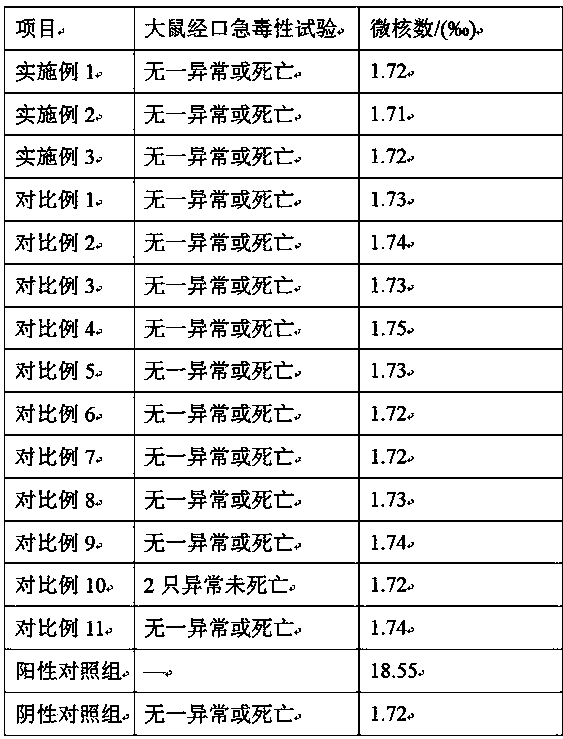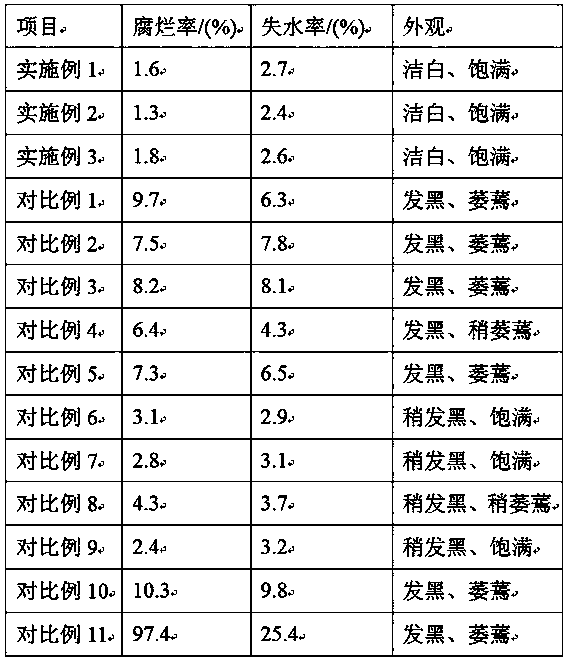Special naturally fermented preservative color-protecting agent used for lotus roots
A natural fermentation and color-protecting agent technology, applied in the application, function of food ingredients, food ingredients as antimicrobial preservation, etc., can solve the adverse effects on the flavor and taste of lotus root products, affect the taste of lotus root consumers' appetite, and can not play a role Antibacterial and anti-corrosion problems, to achieve the effect of inhibiting oxidation and water loss, maintaining tender white color, and avoiding oxidative browning
- Summary
- Abstract
- Description
- Claims
- Application Information
AI Technical Summary
Problems solved by technology
Method used
Image
Examples
Embodiment 1
[0026] A natural fermented antiseptic and color-protecting agent specially used for lotus root is made of the following raw materials in parts by weight: ginkgo shell 51, soybean skin 22, soybean root 17, bacterium natto 2, and lactic acid bacteria 3.
[0027] The ginkgo shell is the bony mesocarp of the ginkgo fruit, with a water content of 8-10%.
[0028] The soybean skin is the membranous seed coat on the outside of soybean seeds, with a water content of 6-8%.
[0029] The soybean root is a mature soybean root with a water content of 6-8%.
[0030] The lactic acid bacteria can be directly used for fermentation after secondary activation, and consist of the following strains in parts by weight: Lactobacillus 17, Lactobacillus delbrueckii 13, Lactobacillus bulgaricus 11, Lactobacillus acidophilus 10, Streptococcus thermophilus 10 .
[0031] A preparation method of a natural fermented antiseptic and color-protecting agent specially used for lotus root, comprising the followi...
Embodiment 2
[0043] A natural fermented antiseptic and color-protecting agent specially used for lotus root is made of the following raw materials in parts by weight: ginkgo shell 52, soybean skin 23, soybean root 18, natto bacteria 3, and lactic acid bacteria 4.
[0044] The ginkgo shell is the bony mesocarp of the ginkgo fruit, with a water content of 8-10%.
[0045] The soybean skin is the membranous seed coat on the outside of soybean seeds, with a water content of 6-8%.
[0046] The soybean root is a mature soybean root with a water content of 6-8%.
[0047] The lactic acid bacteria can be directly used for fermentation after secondary activation, and consist of the following strains in parts by weight: Lactobacillus 18, Lactobacillus delbrueckii 14, Lactobacillus bulgaricus 12, Lactobacillus acidophilus 11, Streptococcus thermophilus 11 .
[0048] A preparation method of a natural fermented antiseptic and color-protecting agent specially used for lotus root, comprising the followin...
Embodiment 3
[0060] A natural fermented antiseptic and color-protecting agent specially used for lotus root is made of the following raw materials in parts by weight: ginkgo shell 53, soybean skin 24, soybean root 19, natto bacteria 4, and lactic acid bacteria 5.
[0061] The ginkgo shell is the bony mesocarp of the ginkgo fruit, with a water content of 8-10%.
[0062] The soybean skin is the membranous seed coat on the outside of soybean seeds, with a water content of 6-8%.
[0063] The soybean root is a mature soybean root with a water content of 6-8%.
[0064] The lactic acid bacteria, after secondary activation, can be directly used for fermentation, and are composed of the following bacterial strains in parts by weight: Lactobacillus 19, Lactobacillus delbrueckii 15, Lactobacillus bulgaricus 13, Lactobacillus acidophilus 12, Streptococcus thermophilus 12 .
[0065] A preparation method of a natural fermented antiseptic and color-protecting agent specially used for lotus root, compri...
PUM
 Login to View More
Login to View More Abstract
Description
Claims
Application Information
 Login to View More
Login to View More - R&D
- Intellectual Property
- Life Sciences
- Materials
- Tech Scout
- Unparalleled Data Quality
- Higher Quality Content
- 60% Fewer Hallucinations
Browse by: Latest US Patents, China's latest patents, Technical Efficacy Thesaurus, Application Domain, Technology Topic, Popular Technical Reports.
© 2025 PatSnap. All rights reserved.Legal|Privacy policy|Modern Slavery Act Transparency Statement|Sitemap|About US| Contact US: help@patsnap.com


